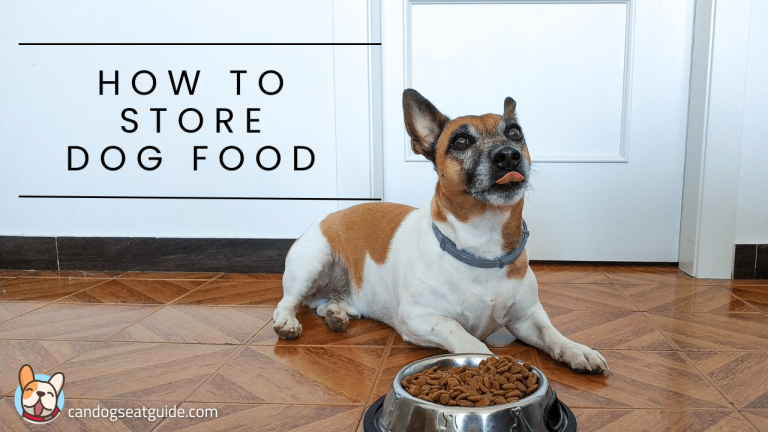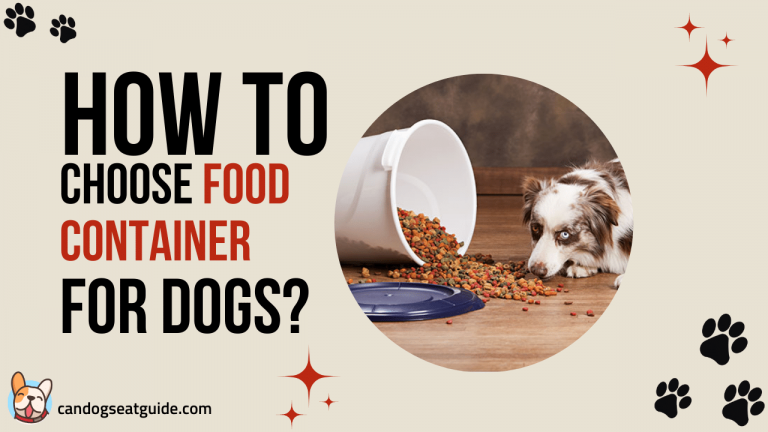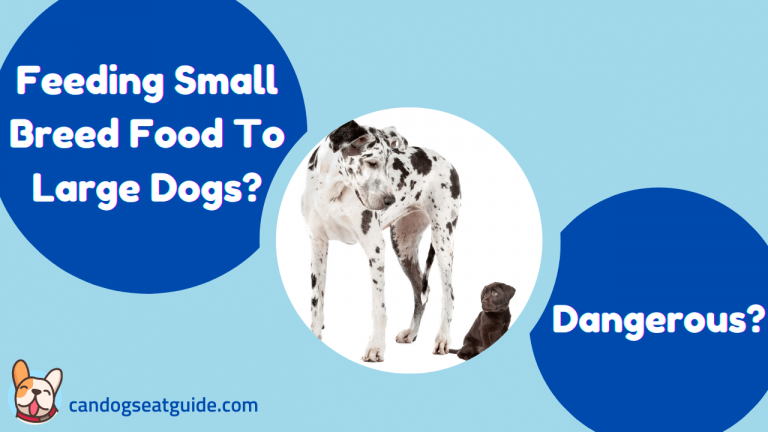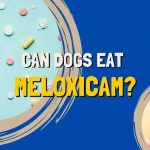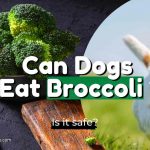Hellooo, owners of senior dogs!
Being a dog owner is a very responsive duty. You have to figure out so many things for your dog, like what products to use for a shiny coat, how often to take baths, how to know if the dog doesn’t feel good, and the most important part is to choose the right food. We all have gone through this.
What do you mean by right food? – you may ask.
Well, the right food is the food that gives the needed nutrients and benefits the overall health of your four-legged friend in the different stages of life.
Today I am going to tell you everything you need to know to be able to choose the best food for senior dogs.
But if you have a puppy or an adult dog, then these tips won’t work for you. But don’t worry, I have a solution for you. Here you can find the information you need about food for junior and small dogs.
What is the difference between food for senior dogs and adult dogs?

That is actually a very good question. We, humans, have to change our food during different stages, but we still can eat the cereal or purees we ate as babies. In different stages of our lives, we need different amounts of nutrients or because of some illnesses, we need something much more than other people our age.
But with dogs is not different. At different stages of their life, they need different levels of nutrition. For example, puppies need much more protein and fat than senior dogs, the difference is around 5%, but need fewer carbohydrates than seniors with 8%.
But between adult food and food for senior dogs sometimes aren’t very noticeable changes.
It’s normal that with getting older dogs don’t need that much fat as they aren’t that much active already and fat is used for energy. Because of less activity, they are more like to gain weight, that’s why many companies for dog food try to lower the fats and calories.
But for weight maintenance, you can lower the calorie intake from human food, like giving them more carrots, cauliflower, or other veggies with low-calorie content. Let them have only 2-3 meals and do not let your dog free feed during the day. But all this should happen with the knowledge of your vet.
There is still not agreed standard for senior dog foods.
When my dog is considered a senior?
It’s different for every breed, it can be different even for two dogs from the same species because of different environments, genetics, and lifestyle.
For many breeds, the senior stage starts when dogs are around 7 years old. But for dogs with a long lifespan like 15-16, it’s too early at 7 years old to call them senior. Small breeds like Pomeranians and Chihuahuas start their senior stage at around 9 years.
Usually, dogs that are over 100 lbs have a shorter lifespan and no matter how many new things are found, no matter how active they are, and how much nutrition they get, some dogs only live 8-10 years.
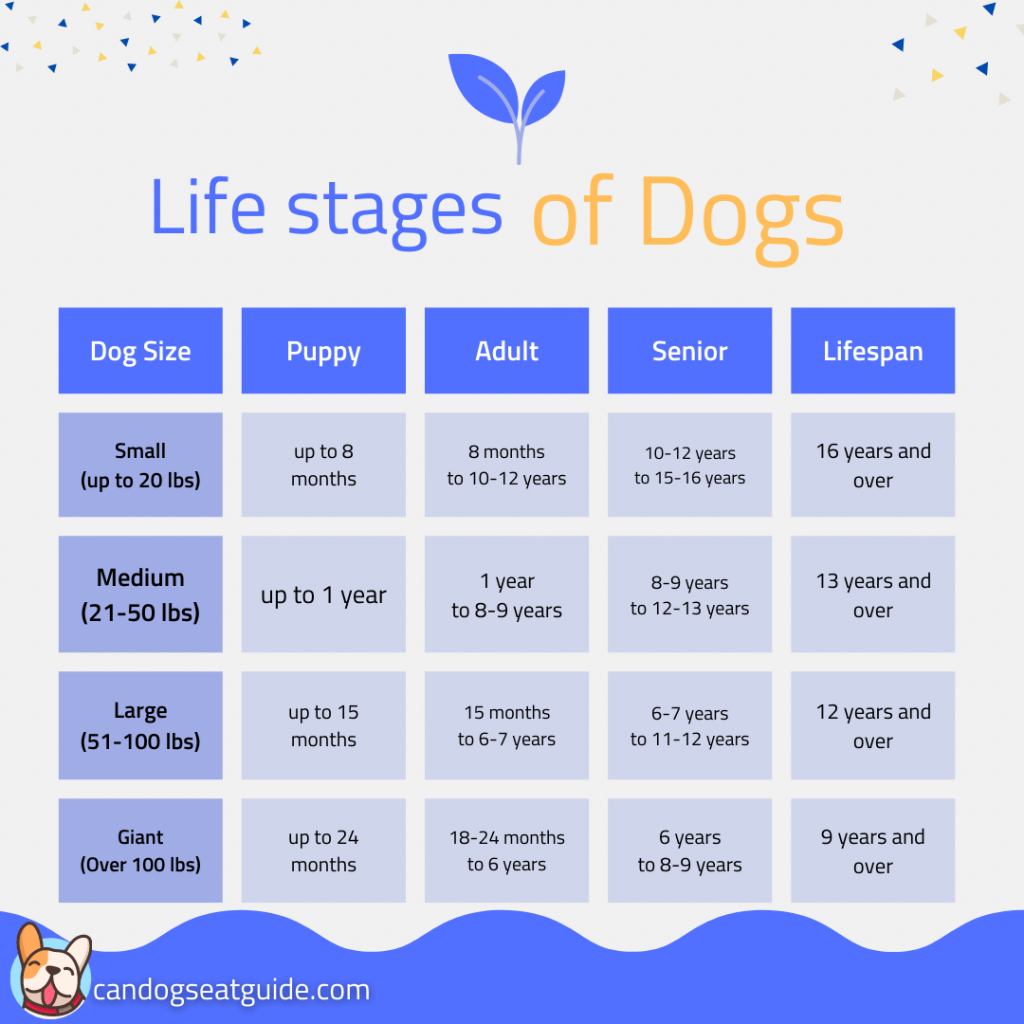
I want to remind you again that not all dogs are the same, each is individual. Things that work for mine, maybe won’t work for yours. The same goes for the lifespan and the ages where the dog gets in the different stages.
Most vets recommend twice a year seniors dogs visitations to check if everything is fine, do a physical exam, and do blood tests. They may recommend to you what food is the best at that stage and if your dog needs some supplements.
But, of course, this shouldn’t stop us from making their lives happy, funny, and full of love.
Signs of Senior Dogs
When your dog is getting closer to the stage of being a senior, you may notice some of the signs below. But you have to know that some of the dogs get only a few of them, and some get almost all of them. All this depends on the overall health of dogs.
1. Decreasing energy and will for activity
The first sign is very common for dogs that are gaining age. Some dogs can continue to be active in the adult stage, they can be very active their whole life.
2. Mobility issues
For example, if your dog sufferers from joint issues, the food diet maybe needs a higher level of glucosamine. At higher levels, it can be found in senior dogs’ food. You may wonder why they need it, right? Glucosamine is used to relieve the pain so your dog may move around easier.
Dogs’ muscle mass may decrease and fat increase which isn’t good for dogs’ joints. You should make sure that dogs are getting enough protein to maintain muscle mass.
3. Weight going up or down
If your dog is gaining weight rapidly it may be a sign of obesity. In this case, the vet will recommend modifying the diet and calorie intake. Or will advise you to give veggies with low-calorie content that make dogs feel full faster. Changing the food is also highly recommended because there are many foods that have much less fat. For weight loss, the food should contain less than 350 kcals per cup.
If your dog is losing weight and not eating as usual self, you should get them checked by a vet because it may be a sign of many diseases. The vet should do exams and if everything is okay then they will modify the dog’s diet. Sometimes the solution is to change the type of food, maybe kibbles are already difficult for chewing, or swallowing dry food is difficult, that’s why you can change it with wet foods from cans or add a bit of water to moisten it. There is also fresh-delivered dog food that is much moister and will be of great help to your doggo. for weight gain, food should contain more than 450 kcals per cup.
4. Slower digestive system
The digestive system starts to work slower and slower. The ability to absorb all the needed nutrients is reduced.
5. Skin and coat issues

If dogs aren’t getting enough amount of nutrients, their skin and coat will suffer for sure. Skin will get dry and itchy, while the coat won’t be shiny. Senior dogs need a bit more care for their coat as they can get more easily dulled.
By getting older the coat may change its color and get lighter or in some places get white.
6. Loss of appetite
This is mostly the main reason why dogs lose weight. The loss of appetite can be caused by loss of taste, loss of smell, or difficulty in eating as they may feel uncomfortable or even worse – to feel pain.
There are appetite stimulants prescribed by veterinarians that can be used for fogs that don’t want to eat.
You may try to include a new flavor as your dog may be bored already from the current one.
Another tip for dogs with loss of appetite is warming the food. Doing this will increase the aroma and may help stimulate the appetite.
7. Problems with vision and hearing
Another sign that your dog is getting older. For better vision dogs need food that is rich in beta-carotene, an example of it is the carrot. Beta-carotene is needed for the development of good sight in puppies and later for maintenance.
8. Increased urination or urinary incontinence
Increased urination is associated with kidney diseases. You should contact your vet as soon as you notice it. As it can get severe and cause many consequences.
9. Changes in the behavior
If you notice changes in the behavior or even memory loss, you need to talk to your vet as the dog may need more antioxidants or MCTs (medium-chain triglycerides) in the diet.
Required Nutrition For Senior Dogs
An adequate and well-balanced diet is the thing most vets search for in dogs. For senior dogs, it means lower in calories, higher in fiber, and fat and protein in amounts that are suitable for exactly your dog. Also, food should be full of vitamins and minerals.
1. Fatty acids – EPA and DHA
Eicosapentaenoic acid (EPA) and docosahexaenoic acid (DHA) are types of omega-3 fatty acids. EPA and DHA are needed for dogs suffering from arthritis or mobility challenges. They can be found in fish oil. The recommended dose of fish oil is 75-100 mg/ kg total EPA/DHA. But the dosage of fish oil supplements should be given by your vet.
Overdosing in omega-3 fatty acids can cause diarrhea, vomiting, weight gain, etc.
If your dog suffered from some skin issues, they may be fixed by increased intake of Omega 3 and Omega 6 fats. They also can be very beneficial for the dog’s brain function.
2. Antioxidants
Antioxidants should always be part of dogs’ food. They help the immune system to stay in a good condition. Many fruits and veggies that are safe for dogs are full of antioxidants, so feel free to add them to your dog’s menu.
3. Protein
Protein intake should always be a priority during the whole lifespan of your dogs. It is used to build muscles and maintain them. As dogs get older it’s more difficult for them to synthesize it by themselves or even some dogs can’t do it at all. That’s why they need it even more in their diets.
But if your dog suffers from kidney issues, then usually it’s better if dogs get less protein, so it will lower the workload, and kidneys won’t work so hard.
Protein in many dogs’ food is the first ingredient. Sources of protein that are mostly used are chicken, beef, turkey, or lamb.
4. Carbohydrates
The nutrient that gives us, humans, and dogs quick energy. They need it for playing and exercising. Carbohydrates also provide fiber which is very important, but information on it is down below.
Sources of carbohydrates are rice, potatoes, and peas.
5. Fiber
Some dogs need more fiber while others need it much less.
There are 2 types of fiber that dogs need:
- soluble fiber;
- insoluble fiber.
Soluble fiber dissolves in water. It improves digestion and reduces blood cholesterol and sugar. That way it also reduces the risk of diabetes.
Insoluble fiber helps in softening the stool. It is the main helper of the bowel and the regular poop. Supports insulin sensitivity.
If your dog suffers from constipation it means that it doesn’t get enough fiber from the food. Then you should increase dogs’ fiber intake.
Pumpkin is a great example of a fruit full of fiber.
6. Sodium
Usually, you know, dogs need a very little amount of sodium in their diets.
But for dogs suffering from kidney or heart diseases, the need for a low-sodium diet is even higher.
The Right Type of Food for Senior Dogs
Kibble
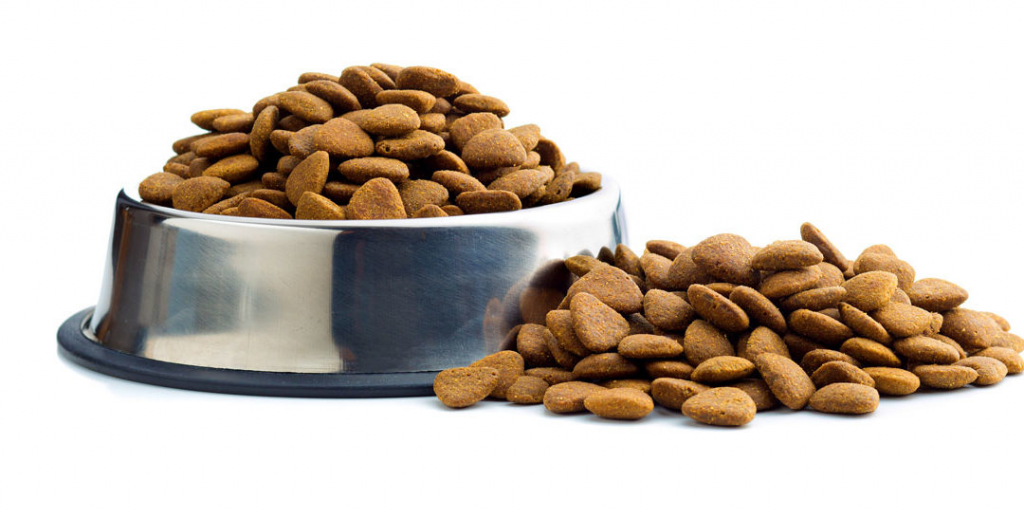
It’s good for dogs with dental issues like plaque buildup. Kibbles may contain some ingredients like sodium hexametaphosphate that are specifically used to control dental diseases.
Wet foods

It’s the best option for dogs that have some missing teeth or had lost all of them. It’s good for senior dogs that have problems with their appetite or if they are picky eaters.
Homemade
We know how good homemade food is for us but for dogs it’s a bit difficult task, especially for people that work over 8 hours a day. Food should contain all the nutrients that I already mentioned and you will spend hours in the kitchen.
But healthy homemade treats are always a good idea. You can find many ideas in our articles and find which veggies and fruits are safe for dogs.
Transition to Food for Senior Dogs
The transition should happen really slowly. It mustn’t be done in less than a week. The good amount of time for a complete transition is around 10-14 days.
Sometimes dogs that are suffering from digestive problems take a longer time to change the food.
My Advice
The best way to make the transition is by giving the senior version of what they had in the adult stage.
What do I mean?
Let’s be the same brand, variety, and most important the type and texture of the food. Yes, sometimes you have to change the type but if there is no serious reason behind this decision better not.
Why?
In this way, you will skip the phase with an upset stomach and some other digestive problems like constipation or diarrhea.
Sometimes veterinarians suggest trying specialized food for your dog’s breed. But in most cases, they are overpriced and contain the same ingredients as other “normal” food for senior dogs.
Summary
In many cases, there is no need for food to be changed. But for dogs with special needs like having some diseases, their diets should be changed but that can happen only if the vet decides so. Don’t try to do it on your own.
At least twice a year veterinary check-ups so you can find sooner when your dog starts the senior stage and what kind of nutrients are needed more and others may be needed less.
Food for senior dogs can help in managing or curing these diseases:
- skin diseases;
- arthritis;
- some types of cancers;
- dental diseases;
- obesity;
- dementia (cognitive disfunction);
- kidney issues;


